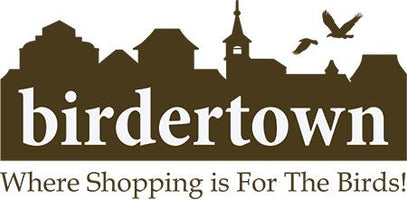
How to Choose the Right Bird Feeder For Your Backyard
How to choose the right bird feeder? There are so many options. Picking the best one for your backyard will vary depending on what feathered visitors you want to attract. Let’s look at the different types and how to choose the best one.
Before jumping into the different types, it can be handy to understand the major factors to consider. When looking for a new bird feeder, there are a few core things that you will generally want to keep in mind:
- Is the feeder sturdy? (After all, it will be exposed to the elements)
- Will you be hanging the feeder, or mounting it on a pole or post?
- Does it use the type of food you plan to use?
- How easy or difficult is it to clean?
- How easy or difficult is it to refill?
- Will you need to refill it often?
- What types of birds will it attract?
- How attractive is it to squirrels?
With these factors in mind, let’s take a look at the various options to help you decide how to choose the right bird feeder for your needs.

Window feeders are very popular because one of the significant benefits is that they enable you to get an up-close perspective of your local feathered friends. Many people enjoy putting them on their kitchen or living room windows for this reason.
They are simple in nature. You affix little suction cups to the window, securing the feeder in place. If you take this route, be sure to get a sturdy one with quality suction cups. This window mount tray feeder is a personal favorite.
The open design of a window feeder makes it one of the easiest for both refilling and cleaning. This feeder is great for attracting hummingbirds, chickadees, cardinals, and finches.

One of the most popular choices for a new bird feeder is the platform option. This may also be referred to as a tray feeder. As the name would suggest, this feeder is characterized by a tray that holds the seed.
Tray feeders typically provide little protection from the elements, meaning you’ll want to only place a day or two of birdseed in them at a time. This will prevent the growth of bacteria and fungus should they get too wet. They can be a bit more difficult to clean unless the bottom has meshed like this one, which helps with water drainage.
The type of birds that platform feeders attract depends on where you put them. There are tray feeders that can be hung, which will attract visitors like titmice and chickadees. Meanwhile, the ground variety yields doves, jays, and sparrows. Note that these will also attract squirrels.

Hoppers are sometimes called house feeders and are great for protecting seeds from the elements because they have a roof. They are very convenient as they can typically hold several days’ worth of birdseed, meaning you can refill them more sparingly.
They are typically either affixed to a pole/post or suspended. The roof is great for protecting them from rain; however, if rain does get inside, you’ll want to clean it and change the contents immediately to prevent fungus. Like platforms, hoppers are also lovely to squirrels, so a squirrel baffle is recommended.
With this feeder, you are likely to see a large variety of feathered friends such as cardinals, sparrows, buntings, and finches. In fact, a close friend recently shared a photo of a family of grosbeaks using his cedar super bird hopper.

As the name would suggest, a tube feeder holds birdseed in a clear, plastic tube. The tube will have several ports with perches that allow for feeding. This spiral finch tube is a personal favorite.
A huge advantage of selecting this for a new bird feeder is that it keeps the seed very protected from the weather and relatively squirrel-resistant, especially those with cages around the feeder. The only downside is that cleaning the inside can be a challenge, however, most of them can be taken apart for easier cleaning.
Selecting this type will lure many different species depending upon the size of the feeding ports. Larger ports attract visitors like cardinals, sparrows and grosbeaks, while those with smaller ports attract goldfinches, chickadees, siskins and redpolls. Some have perches above the ports which will attract smaller birds that can feed upside down like finches and chickadees, while deterring larger birds like starlings.

A suet feeder is an ideal type to attract new species. You’ve seen this type of feeder before. Birds will perch on the cage and eat the suet.
You will typically hang this from a pole, tree, or wire between two trees. You’ll want to only use these feeders in cooler or temps less than 80 degrees. They are easy to refill and you won’t have to clean it very often due to its design. Some hopper feeders like this one, have places for suet on each end.
Suet feeders attract woodpeckers, nuthatches, titmice, wrens, and sometimes even warblers. This is a great option to use in conjunction with a few regular bird seed feeders to get a wider variety of our feathered friends into your backyard.
Final Thoughts
Purchasing a new feeder is always an exciting addition to your garden or backyard. However, it is important to consider things like ease of use, squirrel proofing, and the types of birds different kinds of feeders will attract. Birdertown is always happy to help you find the perfect feeder to meet your needs, including many other unique types such as bluebird feeders, oriole fruit feeders, and hummingbird feeders. Happy birding!
